Diatomaceous Earth: [Definition, Uses, Application and Advantages]
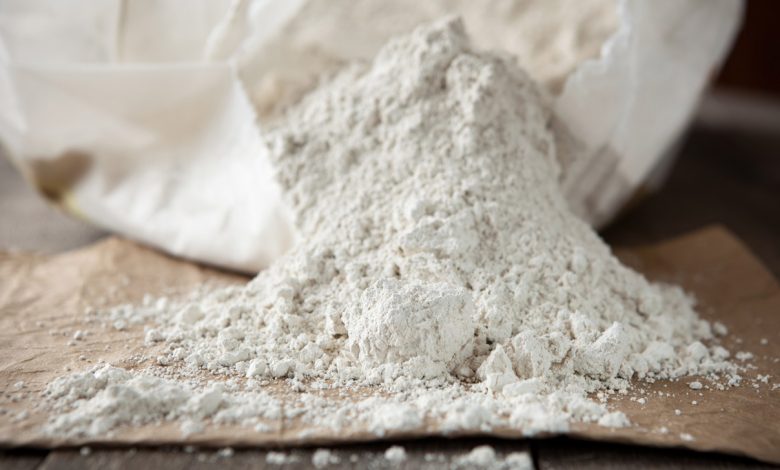
What is diatomaceous earth?
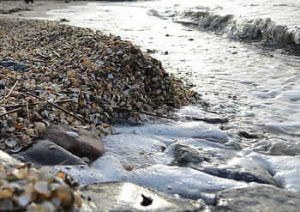 Diatomaceous earth, diatomite or white earth, is a powder or granules that arises from the remains of fossilized unicellular algae, which have a silica coating, accumulated over time in the sea.
Diatomaceous earth, diatomite or white earth, is a powder or granules that arises from the remains of fossilized unicellular algae, which have a silica coating, accumulated over time in the sea.
Fossilized diatom rocks are subjected to a delicate process that turns them into a fine talc, after their extraction.
The skeletons of the diatoms become microscopic silicon needles, which adhere to the insects, breaking the waxy cover that protects them, causing wounds and absorbing part of the vital flows of the insects, weakening them to death.
It has been scientifically proven that diatomite is an efficient insecticide, fungicide and bactericide agent that acts by dehydrating the cells of insects that are pests of crops and garden plants.
At the agricultural level, diatomaceous earth strengthens the leaves and stems, improves photosynthesis, reduces water evaporation, controls the development of the root system, the assimilation and distribution of mineral nutrients, increases the resistance of the plant to stress.
In animal production, diatomaceous earth is also used as a mineral supplement in their diet, as an antiparasitic and antidiarrheal, thus avoiding treatments with chemical and toxic substances.
Diatomaceous earth eliminates lice, fleas, ticks, insects that transmit animal diseases, and eradicates flies. It is applied by sprinkling directly or in the pen and the amount depends on the size of the animal.
Uses of diatomaceous earth in crops?
The effectiveness of diatomaceous earth has been proven in the treatment as an insecticide, fungicide and drying agent:
Dryer of all types of crops
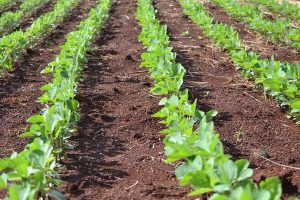 It has insecticidal, fungicidal action. The action of diatomaceous earth as an insecticide, fungicide and drying agent consists of forming a natural barrier against insects, mites and other crop pests.
It has insecticidal, fungicidal action. The action of diatomaceous earth as an insecticide, fungicide and drying agent consists of forming a natural barrier against insects, mites and other crop pests.
For diatomaceous earth to fulfill its insecticidal function, it must be sprinkled dry or sprayed in water on crops, following the recommendations and doses indicated for the product.
Dryer of stored grains and seeds
Diatomaceous earth has proven to be very effective for the control of worms and weevils in stored grains and seeds, thus avoiding deterioration and loss of their commercial value.
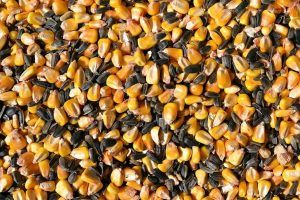 The death of the insects occurs approximately 12 hours after coming into contact with the product.
The death of the insects occurs approximately 12 hours after coming into contact with the product.
Due to its high hygroscopic power, it absorbs the humidity present in grains or in silos, preventing the formation of pathogenic fungi.
Its insecticide effect controls for 9 to 11 months all kinds of pests that attack the grains, both inside and outside the silos.
Drying of floors and installations
Through its action as an insecticide, absorbent and deodorant. On the floors of farmyards, greenhouses, gardens, etc., diatomaceous earth has great power as a dehydrating, bactericidal and deodorant.
- It works as a mechanical insecticide in the treatment of guano and manure and facilitates its handling.
- Controls flies when applied to feces.
- Eliminates odors and bacteria
- It improves the habitat and quality of life and supports the good health of farm animals such as cows, poultry, goats, pigs, horses, sheep, among others.
- It acts as an absorbent for all kinds of liquids by direct contact.
- It transforms liquids into solids (Fuels, Oils, Acids, Moisture) encapsulating them and facilitating their handling, offering maximum safety to operating personnel.
- Accelerates the composting process of organic waste.
- Due to its absorbent and deodorizing power, it is also very suitable for sprinkling on rubbish deposits and/or elements that give off a fetid odour.
In the restoration and fertilization of soils
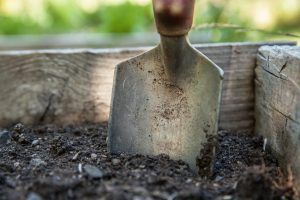 After cultivation or various processes of them. Diatomaceous earth acts as a soil reclaimer or restorer.
After cultivation or various processes of them. Diatomaceous earth acts as a soil reclaimer or restorer.
It is used as a natural fertilizer to provide micronutrients that allow the recovery of fertility and correct the PH of the soil.
As a soil fertilizer, diatomaceous earth performs the following function:
- Provides minerals rich in silicon.
- Improves soil structure and increases fertility for future crops.
- Increases the availability of Nitrogen, Phosphorus, Potassium, Iron, Zinc.
- Accelerates the degradation of organic matter.
- Increases soil resistance against erosion caused by wind and excess water.
What pests does diatomaceous earth fight?
Diatomaceous earth applied to crops effectively combats the appearance of the following pests:
- Arachnids: Spiders, (Tetranychidae). Common pests of fruit trees, vegetables and garden plants.
- Slugs: (Limax sp.) and Snails (Gastropoda). Important pests in orchards and gardens.
- Ants: All kinds of ants.
- Cockroaches: All kinds of cockroaches.
- Vinchucas: Insect that stays in homes and spreads Chagas disease to humans and animals.
- Corn borer: (Heliothis zea). From corn and other crops such as tobacco, cotton, potatoes and tomatoes.
- Carpocapsa and Grafolita: (Cydia Pomonella). Fruity pear, apple.
- Green bug: (Nezara viridula). Hemiptera that attacks alfalfa, canola, potatoes, strawberries, fruit trees, etc.
- Ch. Horcia Capullera, Pink Lizard, Green Cotton Bug.
- Isoca Meter, Isoca Bolillera, Flax Cutter Worms.
- Mealybugs: (Coccidae). Important pest of olive trees and other fruit trees.
- Curculionids: (Curculionidae). Insects attacking cotton and stored grains.
- Whiteflies (Aleyrodidae.) and Thrips (Thysanoptera) . Some known as major pests of plants kept in greenhouses. There are several species. They are also commonly known as Thysanoptera.
- Marsh caterpillar: (Estigmene acrea). Butterfly that attacks several species of grasses (gramineae).
- Thrips in general Strawberry, Onion.
- Tomato Moth: (Lepidoptera, Scrobipalpula Absoluta). This insect causes a significant drop in crop yields.
- Aphids: (Aphididae). All kinds and varieties of «aphids».
- Sitophilus oryzae and Tribolium Castaneum on WHEAT (14 days).
- Sitophilus Zeamais and Oryzaephilus Surinamensis in CORN (7 days).
- On Vine: Excellent result applied before bunch closure. Prevents Botrytis and micro-wounds caused by branches, heavy rains, hail.
- Garlic nematodes: (ditylenchus dypsa). Microscopic plague, which remains dormant for ten years on earth.
- Cochineal and Oidium: as preventive of leaf fungi.
What advantages does the use of diatomaceous earth offer?
Because it is an organic and natural type insecticide, not chemically treated, diatomaceous earth has innumerable advantages for its use.
- It is very powerful to combat insects, mites and other pests.
- Provides trace elements and essential minerals for plants.
- It can be applied during any phase of our crops.
- Its effect is preventive.
- It is safe for use by people and pets.
- It is a 100% biodegradable and environmentally friendly product.
- It can also be used to control household pests such as cockroaches and ants.
- It is recommended for use as an animal nutrition additive and for deworming in livestock.
- In poultry, in addition to deworming, it also helps to harden the egg shell.
What is the recommended dosage?
The dose to be applied to crops or plants will depend on the state of the pest, humidity and environmental conditions.
Experts, researchers and providers of diatomaceous earth, as a guideline dose, recommend:
When it comes to silos
Dusting: From 2.5 to 5 kg of diatomaceous earth insecticide per grain to be ensiled. Ideal to apply it in the establishment’s wheel. In this way, each of the grains to be ensiled comes into contact with the product.
When it comes to planting lines
1 to 2 kilos will be used for every 50 kilos of chemical fertilizer for each planting line. Because it is a product that has been certified as Organic Ecological, diatomaceous earth can remain in the grains when they are packaged and/or consumed without any risk. It has no expiration period.
What precautions should be taken when using diatomaceous earth?
As with any product or insecticide, it is important to keep in mind that certain precautions must be taken, especially when it is not used industrially.
- Acquire the product in stores and departments that guarantee the integrity of the product and verify on the label that it is 100 percent natural.
- Being an ecological insecticide and fertilizer, it is not toxic to humans, but any inhalation could compromise the health of those who use it.
- It is recommended to use gloves, masks, lenses (glasses) and any other type of protector to prevent dust from reaching the eyes or causing dry skin.


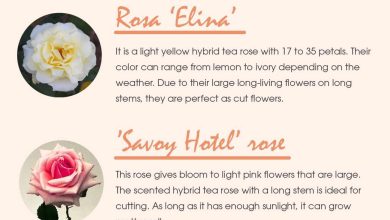

![Photo of Prickly Pears: [Cultivation, Irrigation, Care, Pests and Diseases]](https://www.complete-gardening.com/wp-content/uploads/2022/08/prickly-pears-cultivation-irrigation-care-pests-and-diseases-390x220.jpg)